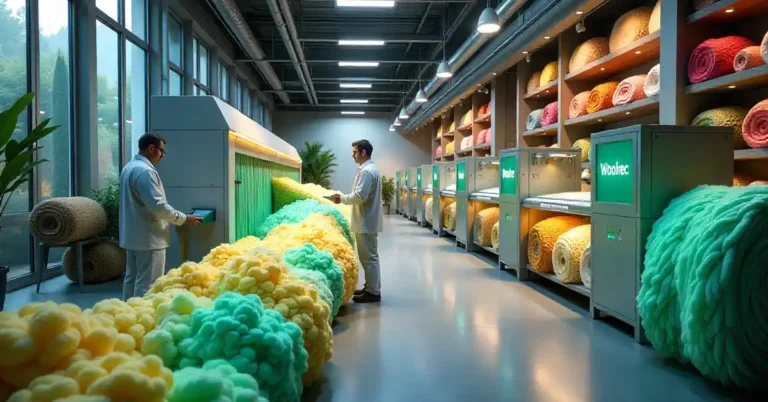Imagine walking into a Japanese office for the first time and noticing a small card clipped to an employee’s shirt pocket. It looks official, yet unfamiliar. That card is called a soutaipasu, a simple object loaded with meaning and importance in Japanese workplaces. Understanding what a soutaipasu is and why it matters opens a window into Japanese work culture and everyday life.
What Is a Soutaipasu?
A soutaipasu (相対パス) is essentially an identification card used within many Japanese companies and institutions. The word itself combines “soutai” (相対), meaning “face-to-face” or “relative,” and “pasu” (パス), a loanword from the English “pass.” Put simply, it’s a pass or badge that identifies an employee or authorized person.
These cards are typically worn on a lanyard or clipped to clothing, making them visible at all times during working hours. They usually display the person’s name, photo, job title, and the company logo. Some may also include barcodes or RFID chips for electronic access control.
While it might seem like just another ID card, the soutaipasu plays a crucial role in maintaining security, organization, and communication within the workplace. In a country where hierarchy and respect are deeply ingrained in the corporate culture, the soutaipasu not only serves as a means of identification but also signifies the employee’s role and status within the organization.
Origins and Evolution
The concept of employee identification cards is not unique to Japan, but the soutaipasu has evolved to fit the specific needs of Japanese corporate culture. Its widespread use began in the late 20th century, as companies sought to improve security and streamline internal processes.
Over time, the design and functionality of soutaipasu have adapted to technological advances. Modern versions often integrate with digital systems, allowing employees to access restricted areas, log attendance, or even make purchases within company premises. This integration not only enhances security but also improves efficiency, as employees can move seamlessly through different areas of the workplace without the need for additional keys or access codes.
Moreover, the soutaipasu has become a symbol of corporate identity and pride. Many companies take great care in the design of their ID cards, often incorporating unique elements that reflect their brand’s ethos. Some organizations even hold events to celebrate employees who have reached significant milestones, where they receive specially designed soutaipasu as recognition of their loyalty and contributions. This practice fosters a sense of belonging and community within the workplace, reinforcing the idea that each employee plays a vital role in the company’s success.
The Role of Soutaipasu in Japanese Work Culture
In Japan, work culture places a strong emphasis on hierarchy, responsibility, and group identity. The soutaipasu reflects these values in several ways.
Symbol of Belonging and Identity
Wearing a soutaipasu signals membership in a company or organization. It’s a visible sign that the wearer belongs to a particular group, reinforcing a sense of unity and shared purpose. This is especially important in Japanese workplaces, where group harmony and collective effort are highly valued.
Employees often take pride in their soutaipasu, which can feel like a badge of honor. It represents their role, responsibilities, and commitment to the company’s goals. The design and quality of the soutaipasu can also reflect the company’s brand identity, with many organizations opting for unique designs that embody their corporate values and aesthetics. This not only fosters a sense of pride among employees but also enhances the company’s image in the eyes of clients and partners.
Maintaining Security and Order
Security is a top priority in many Japanese companies, particularly those handling sensitive information or valuable assets. The soutaipasu helps control access to offices, factories, and other restricted areas. Only individuals with valid cards can enter certain spaces, reducing the risk of unauthorized intrusion.
Additionally, the card aids in quickly identifying employees, visitors, and contractors. This streamlines communication and ensures that everyone in the workplace is accounted for. The integration of technology into soutaipasu systems has also advanced significantly, with some companies employing biometric features or RFID technology to enhance security measures further. This not only protects sensitive areas but also provides a seamless experience for employees as they navigate through their work environment.
Facilitating Communication and Networking
In large organizations, it can be challenging to remember everyone’s name and role. The soutaipasu helps by providing essential information at a glance. This makes introductions smoother and encourages interaction among employees.
Some companies even use color-coded cards or badges to indicate departments or job functions, further enhancing internal communication. Beyond mere identification, these cards can also serve as tools for networking, as employees are more likely to engage with colleagues from different departments when they can easily identify each other’s roles. Moreover, many organizations host events where employees are encouraged to showcase their soutaipasu, fostering a culture of connection and collaboration. This practice not only strengthens interdepartmental relationships but also contributes to a more cohesive work environment where everyone feels valued and recognized for their contributions.
Design and Features of Soutaipasu
Though the basic purpose of a soutaipasu is straightforward, its design can vary widely depending on the company’s needs and culture.

Visual Elements
Most soutaipasu cards include a clear photo of the employee, their full name, and job title. Company logos and branding elements are prominently displayed to reinforce corporate identity.
Some cards feature additional details like department names, employee ID numbers, or contact information. The layout is usually clean and professional, reflecting the company’s image. In some industries, such as hospitality or retail, the design may also incorporate vibrant colors or playful fonts to align with the brand’s personality and engage customers more effectively. Additionally, the choice of typography can convey a sense of formality or creativity, depending on the company’s ethos.
Security Features
To prevent forgery or misuse, many soutaipasu incorporate security elements such as holograms, watermarks, or embedded chips. RFID technology is common, enabling electronic access control and attendance tracking.
These features not only enhance security but also improve operational efficiency by automating routine tasks. For instance, some advanced soutaipasu are equipped with biometric authentication, allowing for fingerprint or facial recognition, which adds an extra layer of security. This is particularly beneficial in high-security environments, such as data centers or research facilities, where access must be tightly controlled. Furthermore, the integration of mobile technology allows employees to use their smartphones as digital ID cards, providing convenience and flexibility in accessing various facilities.
Customization and Personalization
Companies often customize soutaipasu to suit their specific environment. For example, in manufacturing plants, cards might be made from durable materials resistant to dust and moisture. In office settings, sleek plastic cards are preferred for their professional appearance.
Some organizations allow employees to choose lanyard colors or badge holders, adding a touch of individuality while maintaining overall uniformity. This personalization can foster a sense of belonging and pride among employees, as they can express their unique styles while still adhering to company standards. Additionally, some companies have begun to implement eco-friendly materials for their soutaipasu, aligning with sustainability initiatives and appealing to environmentally conscious employees. This not only enhances the company’s image but also encourages a culture of responsibility and awareness among staff members.
Beyond the Workplace: Soutaipasu in Everyday Life
The influence of the soutaipasu extends beyond office walls. It reflects broader Japanese cultural values around order, respect, and identity.

Social Expectations and Etiquette
In Japan, showing your identification when entering a workplace or official building is standard practice. The soutaipasu makes this process smooth and respectful. It’s considered polite to wear the card visibly and to present it when requested.
Failing to display a soutaipasu can be seen as careless or disrespectful, highlighting the importance of this small but significant item.
Use in Schools and Other Institutions
While the term “soutaipasu” is most commonly associated with corporate environments, similar identification cards are used in schools, hospitals, and government offices. Students, teachers, medical staff, and officials often carry ID badges that serve comparable purposes.
These cards promote safety, accountability, and a sense of community across various sectors of Japanese society.
Challenges and Criticisms
Despite its many benefits, the use of soutaipasu is not without drawbacks.

Privacy Concerns
Some employees worry about the amount of personal information displayed on their cards. Photos, full names, and job titles are visible to anyone in the workplace, which can feel intrusive.
Moreover, electronic tracking features raise questions about surveillance and employee monitoring. Balancing security with privacy remains a delicate issue for many companies.
Cost and Maintenance
Producing and managing soutaipasu cards involves ongoing expenses. Companies must invest in printing, security technology, and replacement cards. Lost or damaged badges require prompt replacement to maintain security protocols.
For smaller businesses, these costs can be a significant burden.
Potential for Over-Reliance
There’s a risk that organizations may become overly dependent on soutaipasu for identity verification, neglecting other important security measures. Cards can be lost, stolen, or duplicated, so they should be part of a broader security strategy rather than the sole safeguard.
The Future of Soutaipasu
Technology continues to shape how identification and security systems evolve. The soutaipasu is no exception.
Digital and Mobile Integration
Some companies are exploring digital soutaipasu accessible via smartphones or smartwatches. These virtual badges can offer enhanced security features, such as biometric authentication and real-time updates.
Digital solutions also reduce the need for physical cards, lowering costs and environmental impact.
Enhanced Security Technologies
Advances in biometrics, such as fingerprint or facial recognition, may complement or even replace traditional soutaipasu cards in the future. These technologies offer higher security levels and reduce the risk of card misuse.
However, widespread adoption will depend on cost, privacy considerations, and user acceptance.
Maintaining Cultural Significance
Despite technological changes, the soutaipasu’s role as a symbol of belonging and identity is likely to endure. It represents more than just access-it embodies trust, responsibility, and connection within Japanese society.
Future iterations may blend tradition with innovation, preserving the cultural essence while embracing new possibilities.
Conclusion: More Than Just an ID Card
The soutaipasu is a small object with a big story. It reflects Japan’s meticulous approach to work, security, and social harmony. Far from being a mere formality, it serves as a daily reminder of one’s role within a larger community.
Understanding the soutaipasu offers insight into how identity and belonging are expressed in Japanese culture. Whether seen as a practical tool or a cultural symbol, the soutaipasu remains a fascinating element of Japan’s professional landscape.







